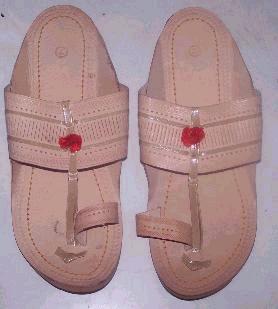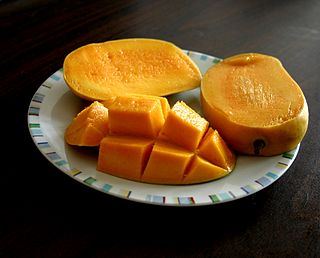Related Research Articles

Kolhapur is a city on the banks of the Panchganga River in the southern part of the Indian state of Maharashtra.

Vellore, also natively spelt as Velur, is a sprawling city and the administrative headquarters of Vellore district in the Indian state of Tamil Nadu. It is located on the banks of the Palar River in the northeastern part of Tamil Nadu and is separated into four zones that are further subdivided into 60 wards, covering an area of 153.14 km2 and housing a population of 315128 as reported by the 2011 census. The Vellore city along with its sub urban areas is spread across approximately 200 km² with a population of 484690 as of 2011.It is located about 137.20 kilometres (85 mi) west of Chennai, and about 213.20 kilometres (132 mi) east of Bangalore. Vellore is located on the Mumbai–Chennai arm of the Golden Quadrilateral. Vellore is governed under a mayor and the Vellore Municipal Corporation. It is a part of both the Lok Sabha and state assembly constituencies of Vellore.

Dharavi is a residential area in Mumbai, Maharashtra, India. It has often been considered to be one of the world's largest slums. Dharavi has an area of just over 2.39 square kilometres and a population of about 1,000,000. With a population density of over 418,410/km2 (1,083,677/sq mi), Dharavi is one of the most densely populated areas in the world.

Bhandara District is an administrative district in the state of Maharashtra in India. The name Bhandara is a corruption of Bhanara. Reference to Bhanara is found in an inscription of 1100 A.D. traced at Ratanpur. The district headquarters are located at Bhandara. The district occupies an area of 3717 km2 and has a population of 1,200,334, of which 19.48% are urban as of 2011. The growth rate of Bhandara is 5.56% Bhandara has a mixed economy with agriculture, industries and forest resources. Bhandara is known for its large production of rice. Tumsar, a tahsil town, is a noted rice market. Bhandara town is also known as "Brass City" owing to the presence of a large brass products industry. Bhandara has several tourist destinations, like Ambagad Fort, Brahmi, Chinchgad, and Dighori.

Vellore district is one of the 38 districts in the Tamil Nadu state of India. It is one of the eleven districts that form the north region of Tamil Nadu. Vellore city is the headquarters of this district. As of 2011, the district had a population of 1,614,242 with a sex ratio of 1,007 females for every 1,000 males. In 2017 Vellore district ranked eleventh in list of districts in Tamil Nadu by Human Development Index.

A Banarasi sari is a sari made in Varanasi, an ancient city in the Bhojpur-Purvanchal region, which is also called Benares (Banaras). The saris are among the finest saris in India and are known for their gold and silver brocade or zari, fine silk and opulent embroidery. The saris are made of finely woven silk and are decorated with intricate designs, and, because of these engravings, are relatively heavy.

Ambur is a town and municipality in newly announced Tirupathur district, Vellore region of Tamil Nadu, India. It is located on the banks of the Palar River between Chennai and Bangalore. Ambur has a sizeable leather industry, and is known for its spicy biryani and for the sweet, makkhenpeda. Ambur was the site of two major military actions in the 18th century. The first was the 1749 Battle of Ambur that opened the Second Carnatic War between the Arcot State and the Mughal Empire. In 1767, the siege of Ambur took place during the First Anglo-Mysore War, with local troops and a British force successfully resisting an attack by the Kingdom of Mysore and by the Hyderabad State.

Ostrich leather is the result of tanning skins taken from African ostriches farmed for their feathers, skin and meat. The leather is distinctive for its pattern of vacant quill follicles, forming bumps ranged across a smooth field in varying densities. It requires an intricate, specialised, and expensive production process making its aesthetic value costly.

Thirumalachari Ramasami is a former Indian Science and Technology Secretary. He assumed charge in May 2006. Prior to this assignment, he served as the Director of the Central Leather Research Institute, Chennai, India. He is a distinguished researcher and leather scientist. He was awarded India's National Civilian Honour the Padma Shri for excellence in Science and Engineering in 2001 and the Padma Bhushan in 2014. He was awarded the Shanti Swarup Bhatnagar Award, the highest award for science in India, for notable and outstanding research in Chemical Sciences in 1993.

Hidesign is a leather goods manufacturer based in Pondicherry, India. In 2018, the company had operations in 24 countries including the United States, United Kingdom, Australia, Kenya, United Arab Emirates, Spain, Portugal, New Zealand and Sri Lanka. The leather goods segment of Hidesign contributes to 160 crore of revenue.

Kolhapuri chappals are Indian decorative hand-crafted and braided leather slippers that are locally tanned using vegetable dyes. Kolhapuri Chappals or Kolhapuris as they are commonly referred to are a style of open-toed, T-strap sandal, but also braided leather Mules or braided leather shoe type designs are also common.

Baluchari Sari is a type of sari, a garment worn by women in the Indian states of West Bengal, Tripura and Assam and the country of Bangladesh. This particular type of sari originated in West Bengal and is known for depictions of mythological scenes on the anchal of the sari. It used to be produced in Murshidabad but presently Bishnupur and its surrounding areas of West Bengal are the only place where authentic Baluchari saris are produced. It takes approximately one week to produce one such sari. In 2011, the Baluchari Sari was granted the status of Geographical Indication for West Bengal in India.
Vellore, located in Tamil Nadu, India, has a diversified economy, primarily based in leather processing, shoe manufacturing, automobile assembly, precision tool milling, explosive materials production, and the service industry.

The Kolkata Leather Complex is an industrial complex at Karaidanga, Bantala near East Kolkata, India. It is located 20 km from the central business district of Kolkata and has an area of about 4.5 square kilometres.

Tannery Road is located in the North East of Bangalore Cantonment, India. It is a 4 km long narrow road with around 700 shops, named after the tanneries of the British India period located at the end of the Road. Tannery Road was officially renamed as Dr B S Ambedkar Road many years back, but it still is referred to by its old name. Tannery Road touches Fraser Town, Richards Town, Giddappa Block, Periyar Nagar and Pillanna Garden. The Tannery Road area is highly populated with a high density. The suburb presents a picture which is a shocking contrast to the hi-tech image of Bangalore. As elections has not brought about any changes, the residents express disillusionment with politicians and politics. Pot-holes and broken pavements are a common feature of Tannery Road, in addition to heavy traffic, water problems, garbage, etc. There is scant respect for traffic rules, and vehicles of all types zoom past in all directions. Residents have to dodge puddles of dirty water and garbage, to move around.
Alibag taluka is a subdistrict/upazila/tehsil in Raigad district of the Indian state of Maharashtra.

Kangra tea is a tea from the Kangra district in Himachal Pradesh, India. Both black tea and green tea have been produced in the Kangra Valley since the mid-19th century. Kangra tea was given the Geographical Indication status in 2005.

Mahabaleshwar strawberry is a strawberry grown in the hilly slopes of Mahabaleshwar, which accounts for about 85 percent of the total strawberry produced in India. Strawberry, along with raspberry, mulberry and gooseberry, is produced on a large scale in and around Mahabaleshwar. Mahabaleshwar strawberry obtained the geographical indication (GI) tag in 2010.

The 'Gir Kesar' mango, also called Kesar, is a mango cultivar grown in the foothills of Girnar in Gujarat, western India. The mango is known for its bright orange colored pulp and was given the geographical indication status in 2011. The biggest market of Gir Kesar is in Talala Gir known as a Mango Market Yard.

Santiniketan Leather Goods are leather products made in Santiniketan and surrounding villages near Kolkata, West Bengal, India. The material used is vegetable tanned leather with art work done by touch dyeing. Its artistic leather bags are popular in foreign markets and are exported to many countries including Japan and the U.S. They are generally made of E. I. Leather from sheepskin and goatskin.
References
- ↑ "EI leather approved, registered as exclusive geographical product". The Hindu . 12 July 2008. Archived from the original on 15 July 2008.
- ↑ Joseph Vackayil (14 January 2008). "Need to explore niche markets for EI leather". The Financial Express.
- ↑ "TN tanners demand abolition of duty on leather exports". Archived from the original on 16 February 2013.
- ↑ BS Reporter (24 July 2008). "East India leather gets GI tag". Business Standard India.
- ↑ "Only 9 products have got GI status so far". The Hindu Business Line. 20 July 2008.